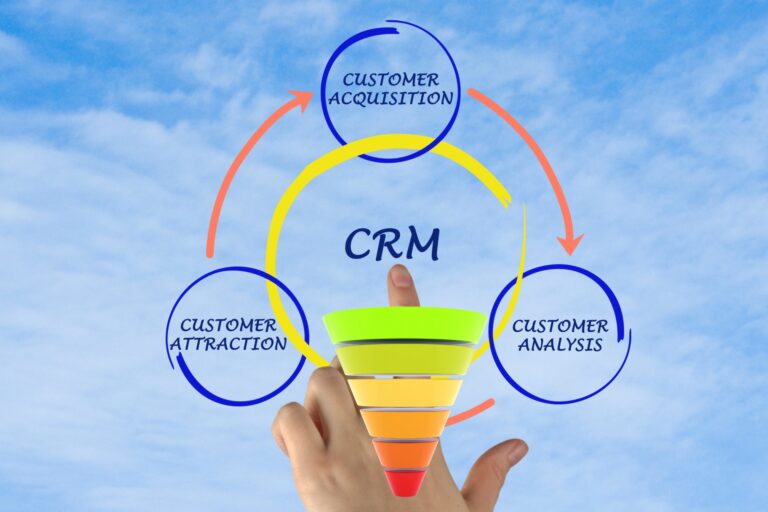Introduction
Leaders of agencies know how hard it is to balance the needs of clients, the needs of employees, and the needs of the business. As teams get bigger and customer needs rise, speed often makes the difference between thriving and just barely living. Even though this is the case, many agencies still depend on human processes a lot.
Avoiding technology isn’t just inefficient; it also comes with rising secret costs that cut into profits and make it hard to grow. Agencies might think that using old ways saves them money, but that’s not really the case. Lack of technology wastes time, leads to more employee turnover, and misses chances that drain resources in a quiet way.
The true cost of putting off or avoiding CRM automation is examined in this piece. When you look at the secret effects on finances, operations, and clients, it’s easy to see why agencies that want to be successful in the long run need to automate.
Wasted Time: The Most Expensive Resource
Time is something that businesses can never get back. Every day, things that have to be done by hand wear it down. A lot of the time, employees spend hours changing files, writing the same emails over and over, and keeping track of jobs on different platforms. Even though these things may not seem like a big deal on their own, when added up, they add up to a big loss.
A study by HubSpot found that sales people spend more than 20% of their time on chores that could be easily automated. This number can be even higher for businesses because they have to do a lot of different things, like marketing, communication, and reports. That spent time directly leads to missed chances to make money.
This resource is taken back by automation. Instead of changing client progress reports by hand, processes can make them and send them for you. Instead of sending emails to each lead individually, you can use sequences to keep in touch with them over time. Because they get extra hours each week, firms give their employees time to work on creative strategy, client involvement, and growth. Those hours are now lost if they are not automated.
The Hidden Toll of Client Churn
More clients leaving is another secret cost of not automating. There are many reasons why clients leave companies, but one of the main ones is that they don’t communicate well or follow up on time. When organizations use human methods, mistakes and delays are bound to happen.
Imagine a client who asks for reports on how the effort is doing. The account manager might need days to gather information and react if they don’t use technology. Until then, the client feels ignored and unimportant. Forbes says that companies that put customer satisfaction first have 80% better rates of keeping customers. Automation is what makes it possible for agencies to regularly provide this service.
Clients will not trust you if you don’t have automatic client websites, planned changes, or proactive processes. Not only does each lost client mean lost money, but it also costs a lot to get a new one. The consulting firm McKinsey says that keeping clients is up to five times cheaper than getting new ones. Not automating not only irritates clients, but it also hurts the agency’s ability to make money.
Revenue Leakage Through Slow Follow-Ups
Leads are what make a business grow, but too few or too many follow-ups kill conversion rates. Neil Patel says that how quickly you respond can make or break a deal a lot of the time. Prospects expect to be able to interact with you almost instantly, which is hard to do without technology.
Every second counts when an ad campaign brings in a lead. If you wait too long to call or email, rivals can step in. If agencies don’t use automatic processes, they might miss out on good chances. Not only do they lose money, but they also waste money on ads and time.
Automation in CRM makes sure that leads are reached right away, cared for over time, and led through an organized process. This is important because without it, companies lose deals and get less money back from their marketing expenses. This is one of the most underutilized parts of the CRM automation cost that companies must deal with.
Overhead Costs of Tool Overload
It’s funny, but companies that fight technology usually have to pay more for software. Instead of buying a CRM that does everything, they use a bunch of different tools for contact, email, reports, and managing their workflow. Even if one tool is cheaper than the others, the total cost of all of them adds up.
Aside from membership fees, the biggest cost is the time wasted moving between tools. Staff lose time organizing data across systems, doing the same work twice, and figuring out why some things don’t match up. G2 says that companies with integrated systems do much better than those with scattered setups. This is mostly because integrated systems get rid of the need for duplicate data.
By combining tools, automation through a single CRM cuts down on costs. Because they don’t use these kinds of methods, agencies lose money every month without realizing it because they aren’t being efficient.
Stunted Scalability
Loss of flexibility is one of the worst secret costs of not automating. Agencies that were built on doing things by hand reach a limit. They can only take on as many clients as their staff can handle by hand, which makes it very hard for them to grow.
That cap goes away with automation. Because processes take care of repetitive jobs, companies can grow without having to hire more staff. Onboarding new clients, developing leads, reporting, and billing can all grow with the business without using up too many resources.
McKinsey’s study on fast-growing businesses shows that automation is one of the main differences between businesses that can grow and those that can’t. It’s impossible for agencies to work smarter without technology. They have to keep working harder. That’s not all that the secret cost is. It’s also the chance that was missed tomorrow.
The Emotional and Cultural Costs
It costs more than just the price. The lack of technology also changes the way agencies work. Staff who have to do the same things over and over again often feel tired and unmotivated. Instead of working on artistic projects that interest them, they have to do boring office work. Over time, this lowers confidence, causes more people to leave, and makes it harder to hire the best people.
It also hurts the agency’s image. When companies don’t seem to be organized or are slow to react, clients notice. These images hurt trust and make it harder to get new clients or sell more to old ones. When you don’t automate, you do minor but long-lasting damage to your culture and image.
Automation, on the other hand, gives teams more power. They can focus on the work they enjoy while the system takes care of the boring tasks. Not only does this increase output, but it also builds a better, happier society that clients can feel.
The Real Cost of Doing Nothing
When leaders think about automation, they often think about how much it will cost to set up a new CRM system. They don’t see the costs that keep coming up when they do nothing. Every month that automation isn’t used brings:
- A waste of hours of staff time
- Leads are getting lost in the crack
- Greater client loss and churn rates
- More work to do because of extra tools
- Not enough room to grow and expand
These prices don’t show up on a single bill, but they slowly take away from profits. Agencies often find that the real CRM automation cost of delay is much higher than the cost of implementing automation by calculating the value of lost time, missed chances, and lost clients.
How Agencies Can Start Automating
Automation doesn’t have to be too much, which is good news. Agencies can begin by focusing on the areas where technology can make the most difference right away.
Follow-ups with leads are a great first step. More deals are closed and conversion rates go up when agents set up processes that respond right away to questions. Next, automatic reporting makes sure that clients always see results without having to wait for staff to spend hours putting together data. Lastly, training processes make things easier for clients, which sets the tone for keeping them for a long time.
As agencies see how useful these tools are, they can start automating more tasks. Over time, the perks that add up change not only how efficiently things work, but also how much money they make.

Conclusion
Automation is no longer a nice-to-have for businesses; it’s a must. Not using systems that are driven by CRM comes with big hidden costs, like wasting time and leads, higher turnover, and not being able to grow. Leaders who only look at the cost of technology up front miss the much bigger cost of not being efficient.
The real CRM automation cost is what businesses lose when they don’t use it, not what they pay to use it. As agencies already know, automation makes things more efficient, builds better relationships with clients, and supports growth that can be scaled up. Outbound studies from HubSpot, Forbes, McKinsey, Neil Patel, and G2 back this up.
For groups that want to do well, the way forward is clear. By scheduling chores with a CRM, you can do more than just save time. You can also make money and set yourself up for long-term success. It’s not worth it to ignore the prices that you can’t see.


